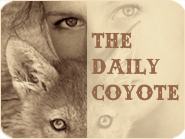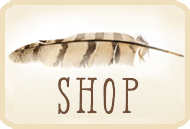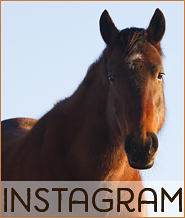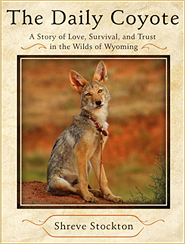Chicky Mamas & Chicky Babies
Two big black hens, identical but for their eye color, decided to get broody together and have been sitting on nests, side by side, in a corner of the chicken house. And now we have baby chicks! As of last night, there are six chicks between them. No one knows which is whose, and no one seems to care. Communal parenting at its best.
They take the babies out together, and return to the chicken house to rest together. The babies follow – and are surprisingly quick and athletic, popping over the log threshold of the chicken house even though it’s half again as tall as they are. When it’s time to nap, the hens settle themselves back onto their nests, and the chicks scurry under their wings and disappear beneath them.
The chicken house abuts one end of my garden, and as I spend mornings out there planting and weeding, I get to watch the antics. The rest of the chickens still roost in the chicken house at night (except for the rogue poufs), but during the day, the chicken house transforms into nursery, and the other chickens are not allowed entry. The mother hens take turns chasing out anyone who dares enter with flapping wings and shaming squawks.
But I pass the test (probably because I bring them food and water), and they let me tiptoe in and sit and watch, and the orange-eyed hen even let me reach a hand beneath her fluffy body, and once it was under there, I felt a chick climb onto my hand and perch on my finger.
Commencement 2015
Shreve Stockton 2015 CSU commencement from daily coyote on Vimeo.
I had the great privilege of giving the commencement address at Colorado State University, College of Natural Sciences.
Full text of the speech may be read HERE.
Hello, Gorgeous
Star Brand Beef 2015
It’s that time of year again! I’m thrilled to announce that Star Brand Beef is back, and ordering has opened for August delivery. The 2015 delivery route will be: Bozeman, Seattle, Poulsbo, Portland, Sacramento, Alameda, San Jose, Santa Barbara, and Los Angeles, with quick stops on I-5 in Olympia, Eugene, Redding, and Paso Robles. I’m also working on a possible mid-August delivery to Southern WY and Denver. All details, including delivery dates and ordering info, can be found on the Star Brand Beef website, HERE.
Also coming ’round this time of year are comments from those who are confused by the seeming contradiction of how much I love cows and how I provide beef for those who choose to eat it. And I would like to continue to explain why this is actually not a contradiction, and how one informs the other. (Previous posts on this topic can be found here, here, here, and here.)
I did not set out to be a rancher. But when I moved to Wyoming, which is cattle country, I saw thousands of calves being shipped off to feedlots every year when they were about nine months old. I heard the bawling of the calves and their mothers when they were separated – the sound travels for miles. And I knew feedlots to be cow concentration camps – the truth about feedlots should be common knowledge by now. Why, oh why, if I loved cows, would I stand by and do nothing? How, being that I was in a position to keep some of those calves from going to feedlots, could I not act, not do something?
When I buy calves from Mike, I keep those calves from entering The System: from going to feedlots, from being contained in pens filled with their own waste, from feed that is unnatural and makes them sick, from alleged abuse from workers, from an existence that is unequivocally and undeniably horrendous.
I do not keep them from transitioning to food. I don’t have the land, the money, nor the arrogance to do this – I believe that people who choose to eat meat deserve an option that is healthy and humane. I eat meat, about one meal a week, but I would continue to do this work even if I were 100% vegetarian. As long as I am able, and as long as people and/or their pets eat meat, I will humanely raise free-ranging, grass-finished beef.
Since they do transition to food, the lives of my beef cattle are short, this is true. But those lives are so completely free – free from stress, free from worry, free from hardship of any kind. For the entire course of their lives, they remain in a family unit, a family herd. They are given hundred- to thousand-acre pastures to roam and graze (land, I might add, that can’t raise other crops due to location and lack of irrigation). They drink water that is cleaner and purer than what most people have access to. They never go hungry, they never have to search for food. And they are treated gently and respectfully.
Mike and I prioritize calm and gentle behavior with our animals. We practice low-stress weaning, separating the cows from their calves but keeping them adjacent, separated by only a fence, so that they may smell, see, and hear one another while the calves transition to grass and hay and the cows dry off. There is no bawling, and the calves do not get sick from stress. When we sort or trail our cattle, we work with them on their time frame, not ours. We allow them to sniff the horse trailer or the squeeze chute and make the decision to enter on their own, rather than hitting them or using a hot shot to force them forward. Mike and I do not use, or even own, hot shots. Hot shots are cattle prods, like a taser for cows, and you would be shocked (no pun intended) by how often they are used.
This is why it’s so important to establish relationships with the people who raise the food you eat – whenever and wherever it’s possible – whether it’s eggs, dairy, or meat. It’s important to go deeper than the label, and find producers who practice a philosophy that aligns with yours. Buying grass-finished meat at Whole Foods is a great start. It is so much better for you, for the animals, and for the environment than conventional feedlot meat. But if the humane treatment of animals is important to you, it takes more work, more diligence. A lot of ranchers love and respect their stock. But not all of them do. Humane treatment is not a given, not yet.
Not everyone can drive down the road and chat with the person who raises the chickens that lay the eggs they eat, but there are other steps that can be taken. Just talking about the humane treatment of animals is a huge and essential step! Change begins with a conversation. And as consumers change their habits, markets change in response.
These market shifts are happening already. In the last five years, there has been an increase in calf buyers who are taking calves to giant grass pastures, and not straight into feedlots, because they see consumers choosing pastured beef. The more conversations we have, and the more choices we make that honor the humane treatment of the animals that become our food, the more change we can inspire industry-wide. We have a long way to go, but we are making strides with every choice we make about what we eat, what we buy, how we buy, and how we think and talk about food.
More information & resources:
@Defending Beef twitter feed: The case for sustainable meat – the manifesto of an environmental lawyer & vegetarian turned cattle rancher, a great link and info round-up
Consumer Guide for Boycotting Factory Farms: via Organic Consumers Association
Feedlot/Grass-based beef comparison & terms: via The Cornucopia Institute
Star Brand Beef: Humanely-raised grass-finished beef









